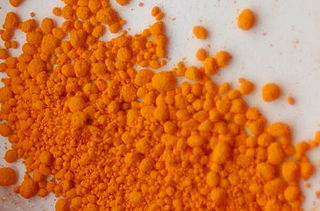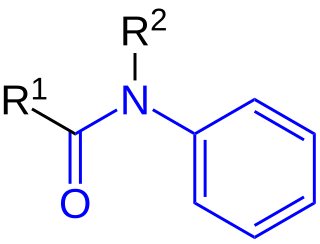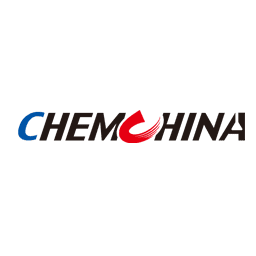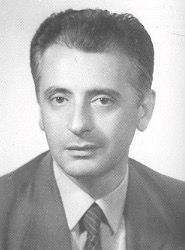
Pesticides are substances that are used to control pests. They include herbicides, insecticides, nematicides, fungicides, and many others. The most common of these are herbicides, which account for approximately 50% of all pesticide use globally. Most pesticides are used as plant protection products, which in general protect plants from weeds, fungi, or insects. In general, a pesticide is a chemical or biological agent that deters, incapacitates, kills, or otherwise discourages pests. Target pests can include insects, plant pathogens, weeds, molluscs, birds, mammals, fish, nematodes (roundworms), and microbes that destroy property, cause nuisance, or spread disease, or are disease vectors. Along with these benefits, pesticides also have drawbacks, such as potential toxicity to humans and other species.

The pyrethrins are a class of organic compounds normally derived from Chrysanthemum cinerariifolium that have potent insecticidal activity by targeting the nervous systems of insects. Pyrethrin naturally occurs in chrysanthemum flowers and is often considered an organic insecticide when it is not combined with piperonyl butoxide or other synthetic adjuvants. Their insecticidal and insect-repellent properties have been known and used for thousands of years.

Fenitrothion is a phosphorothioate (organophosphate) insecticide that is inexpensive and widely used worldwide. Trade names include Sumithion, a 94.2% solution of fenitrothion.

Mercury(II) oxide, also called mercuric oxide or simply mercury oxide, is the inorganic compound with the formula HgO. It has a red or orange color. Mercury(II) oxide is a solid at room temperature and pressure. The mineral form montroydite is very rarely found.

The cyanate ion is an anion with the chemical formula OCN−. It is a resonance of three forms: [O−−C≡N] (61%) ↔ [O=C=N−] (30%) ↔ [O+≡C−N2−] (4%).

Pyrazolopyrimidines are a series of isomeric heterocyclic chemical compounds with the molecular formula C6H5N3. They form the central core of a variety of more complex chemical compounds including some pharmaceuticals and pesticides.

Aldicarb is a carbamate insecticide which is the active substance in the pesticide Temik. It is effective against thrips, aphids, spider mites, lygus, fleahoppers, and leafminers, but is primarily used as a nematicide. Aldicarb is a cholinesterase inhibitor which prevents the breakdown of acetylcholine in the synapse. Aldicarb is considered "extremely hazardous" by the EPA and World Health Organization and has been banned in more than 100 countries. In case of severe poisoning, the victim dies of respiratory failure.
1,2,4-Triazole (as ligand in coordination compounds, Htrz abbreviation is sometimes used) is one of a pair of isomeric chemical compounds with molecular formula C2H3N3, called triazoles, which have a five-membered ring of two carbon atoms and three nitrogen atoms. 1,2,4-Triazole and its derivatives find use in a wide variety of applications.

Semicarbazide is the chemical compound with the formula OC(NH2)(N2H3). It is a water-soluble white solid. It is a derivative of urea.

In organic chemistry, anilides are a class of organic compounds with the general structure R−C(=O)−N(−R’)−C6H5. They are amide derivatives of aniline.

Acephate is an organophosphate foliar and soil insecticide of moderate persistence with residual systemic activity of about 10–15 days at the recommended use rate. It is used primarily for control of aphids, including resistant species, in vegetables and in horticulture. It also controls leaf miners, caterpillars, sawflies, thrips, and spider mites in the previously stated crops as well as turf, and forestry. By direct application to mounds, it is effective in destroying imported fire ants.

Fluvalinate is a synthetic pyrethroid chemical compound contained as an active agent in the products Apistan, Klartan, and Minadox, that is an acaricide, commonly used to control Varroa mites in honey bee colonies, infestations that constitute a significant disease of such insects.

Fentin acetate is an organotin compound with the formula (C6H5)3SnO2CCH3. It is a colourless solid that was previously used as a fungicide.

Bioallethrin is a brand name for an ectoparasiticide. It consists of two of the eight stereoisomers of allethrin I in an approximate ratio of 1:1. The name Bioallethrin is a registered trademark of Sumitomo Chemical.

Triazofos is a chemical compound used in acaricides, insecticides, and nematicides.

Ethiofencarb is a carbamate insecticide which is useful in controlling aphids on hard and soft fruits and some vegetables. It is not as dangerous as organophosphorous pesticides, but is considered highly toxic to humans in the UK, moderately toxic under US EPA classification, and highly toxic to aquatic life.

4-Methyl-3-thiosemicarbazide is an organosulfur compound with the formula of with the formula CH3NHC(S)NHNH2. It is a white, odorless solid. The compound is one of the many derivatives of thiosemicarbazide. It is a precursor to diverse organic compounds and metal complexes.

China National Chemical Corporation, commonly known as ChemChina, is a Chinese state-owned chemical company in the product segments of agrochemicals, rubber products, chemical materials and specialty chemicals, industrial equipment, and petrochemical processing for the civilian and military sectors. As of 2020, it is ranked 164th among the Fortune Global 500 companies.

Profenofos is an organophosphate insecticide. It is a liquid with a pale yellow to amber color and a garlic-like odor. It was first registered in the United States in 1982. As of 2015, it was not approved in the European Union.

Francesco De Lorenzo is an Italian physician and politician and is a member of the Italian Liberal Party.



















